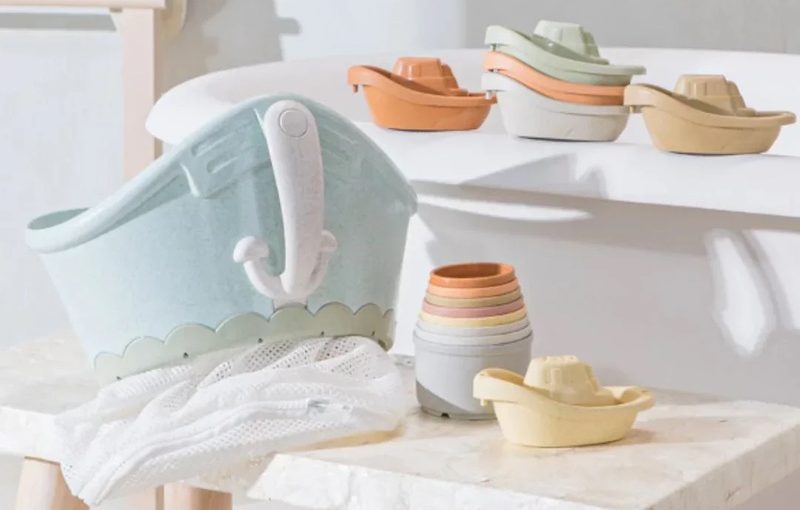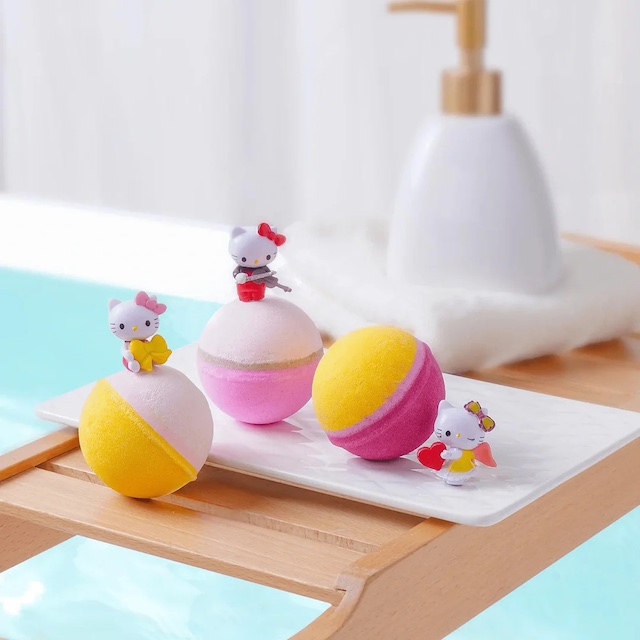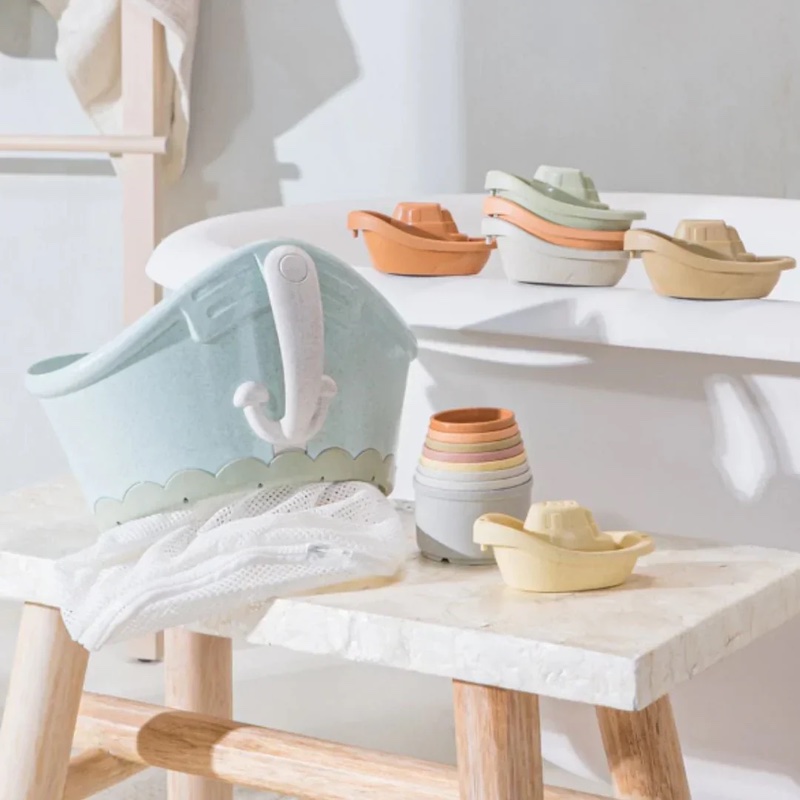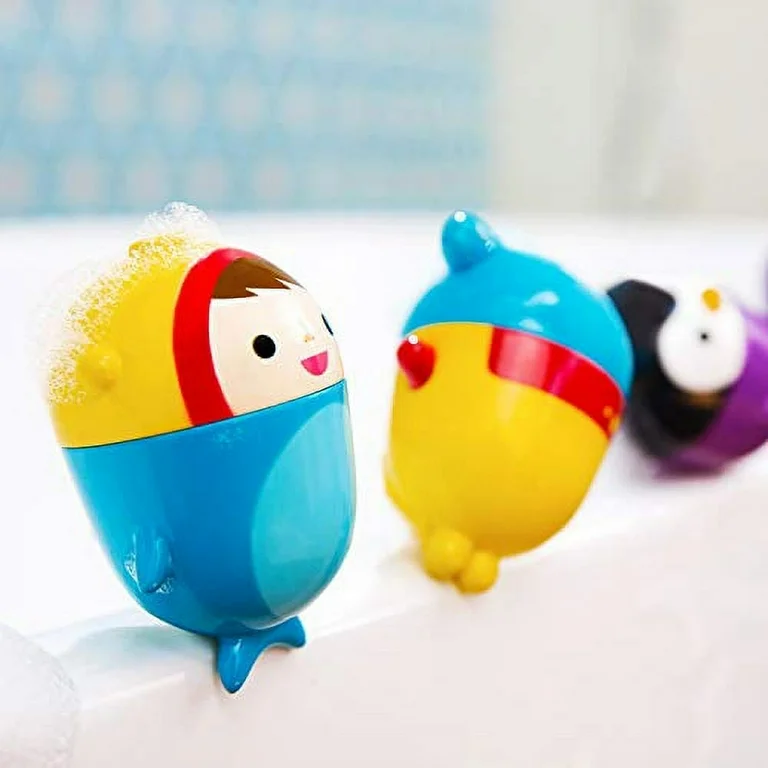Introduction to Newborn Bath Time
Bathing a newborn is more than just a hygiene routine. It is a chance for bonding and sensory exploration. However, this activity comes with challenges, particularly for new parents. Safety and comfort are paramount. The right newborn bath toys can transform this daily task from a daunting chore into an enjoyable experience. Rolling out floating ducks or colorful squirters sparks joy and soothes infants. To maximize these moments, understanding the role of bath toys is crucial. They should be engaging to captivate your baby’s attention, yet simple enough not to overwhelm them. In our journey through the world of newborn bath toys, we will unravel the best practices for a safe and entertaining bath time.
Essential Safety Tips for Newborn Bath Toys
Safety is the top priority when it comes to selecting newborn bath toys. Keep these tips in mind:
- Choose Non-Toxic Materials: Ensure that the toys are free from harmful chemicals. Look for BPA-free, PVC-free, and phthalate-free labels.
- Check for Small Parts: Toys with small parts can pose a choking hazard. Always opt for large, one-piece toys that don’t break easily.
- Water-Tight Toys: Avoid toys that trap water. They can become breeding grounds for mold and bacteria which can be harmful.
- Soft and Gentle: The toys should be soft and have smooth edges to prevent any injury to your newborn’s delicate skin.
- Temperature-Sensitive Toys: Some toys change color in hot water, which can help ensure that the bath water is not too hot for the baby’s skin.
- Regular Inspection: Inspect bath toys frequently for signs of damage or wear. Discard any toys that are broken or have sharp edges.
- Proper Supervision: No matter how safe a toy is supposed to be, never leave your baby unattended during bath time.
By following these tips, you can create a secure and fun bath time environment for your newborn. Introducing bath toys that adhere to these safety standards not only makes bathing enjoyable but also gives you peace of mind.
Top Rated Newborn Bath Toys for Safety and Entertainment
Finding the right newborn bath toys that balance safety and fun can be a bit tricky. To make your search easier, we’ve lined up some top-rated toys designed with your baby’s well-being and enjoyment in mind. Let’s explore some options that nurture joy and ensure a secure splash.
- Color Changing Rubber Ducks: These toys are perfect for newborns. They change color with water temperature, indicating a safe bath environment. Their large size and absence of harmful chemicals make them a great choice.
- Floating Foam Books: Literacy can start early with waterproof books that float. They contain no small parts and are easy for little hands to hold onto during bath time.
- Squirt-Free Animals: Traditional squirt toys can harbor bacteria, but newly designed animals without holes prevent water retention. They’re also made of soft materials, which are gentle for newborns.
- Soft Plastic Stacking Cups: Enhance motor skills and prevent injury with these smooth-edged cups. They are free from BPA and phthalates, making them both educational and safe.
- Bathtub-Safe Mirrors: Nurture your baby’s self-awareness with shatterproof mirrors designed for bath time. These mirrors stick to the walls of the tub and encourage interactive play without risk.
- Light-Up Waterproof Toys: Engage your baby’s senses with toys that softly illuminate. The lights are safely encased, ensuring they are captivating but secure.
When choosing newborn bath toys, look for items that are durable, hygienic, and above all, safe for your little one. Toys that stimulate the senses without overwhelming them are ideal for keeping entertainment levels high and safety in check. Enhance your newborn’s bath time with these delightful and secure toy options, ensuring that cleanliness comes with a dose of fun.
The Benefits of Bath Toys for Newborn Cognitive Development
Introducing bath toys into a newborn’s bath time ritual has several cognitive development benefits. These toys can aid in the growth of fundamental skills while nurturing an enjoyable bath experience. Let’s delve into some key advantages they offer.
- Stimulates the Senses: Bath toys with varying textures, colors, and shapes stimulate the baby’s senses. This helps to build neural connections crucial for sensory processing.
- Encourages Exploration: As babies reach for and grasp bath toys, they explore cause and effect. They learn to predict outcomes, which is essential for cognitive development.
- Promotes Language Skills: Talking about the toys, their colors, and actions during bath time introduces new vocabulary and aids in language acquisition.
- Enhances Fine Motor Skills: Picking up and holding these toys helps improve hand-eye coordination and strengthens the small muscles in the baby’s hands and fingers.
- Boosts Spatial Awareness: Positioning toys in the water teaches babies about space and distance. They start to understand concepts like ‘in’, ‘out’, ‘above’, and ‘below’.
- Strengthens Concentration: Focusing on a bath toy can improve a newborn’s attention span. This is important for learning and memory skills down the line.
- Builds Cognitive Skills: Sorting and categorizing toys, like stacking cups or fitting shapes, bolster problem-solving abilities and cognitive flexibility.
By intertwining fun with learning, newborn bath toys play a pivotal role in early childhood development. They are not just playthings; they are tools that assist the brain in understanding the world. For new parents, these toys are valuable allies in their child’s growth and learning journey.
How to Clean and Store Newborn Bath Toys
Maintaining the cleanliness of newborn bath toys is crucial for your baby’s health. Follow these steps for effective cleaning and storage:
- Use Mild Soap and Water: Regularly wash the toys with warm water and mild soap. Avoid strong chemicals.
- Rinse Thoroughly: Ensure you rinse all the soap off to prevent any residue that could irritate your baby’s skin.
- Dry Completely: After washing, let the toys air dry fully. Damp toys can grow mold and bacteria.
- Store in a Dry Place: Keep bath toys in a dry, well-ventilated area. This prevents moisture buildup.
- Consider Mesh Bags: Mesh bags can be hung up, allowing toys to drip dry and stay organized.
- Weekly Deep Clean: Soak toys in a vinegar solution once a week to disinfect them. Use one part vinegar to three parts water.
- Close Holes in Squirt Toys: Seal any holes with hot glue to prevent water from getting inside and creating mold.
- Regular Inspection: Check toys for mold and toss them out if you find any. It’s better to replace than risk your child’s health.
By keeping your newborn’s bath toys clean and storing them properly, you ensure a safe and hygienic playtime in the tub. Short, simple steps can make a big difference in your child’s health and safety.
The Best Materials for Newborn Bath Toys
When choosing newborn bath toys, the material is a key factor. It impacts both safety and durability. Here are the materials best suited for newborn bath toys:
- Silicone: This material is soft, flexible, and free from BPA and phthalates. It’s long-lasting and easy to clean.
- Natural Rubber: A safe option, natural rubber is biodegradable and often free of harmful chemicals. It’s also gentle on a baby’s delicate skin.
- Cloth: Cloth toys can be machine washed, making them easy to keep clean. Ensure they are quick-drying to prevent mold growth.
- Polyethylene: Look for high-density polyethylene (HDPE) toys. They are sturdy and free from BPA.
- Wood: Wooden toys coated with non-toxic paint are eco-friendly and can be safe if free of splinters and sharp edges.
Each material offers unique benefits, but all should be non-toxic and easy to clean. The final choice depends on the balance you seek between safety features and sensory stimulation for your newborn.
Avoiding Common Hazards with Newborn Bath Toys
When selecting newborn bath toys, it is crucial to avoid common hazards. Here’s what to watch for:
- Stay Alert for Recalls: Regularly check if a toy has safety recalls. Remove recalled toys immediately.
- Beware of Strangulation Risks: Avoid toys with long strings or cords. These can pose strangulation hazards.
- No Sharp Edges: Choose toys without sharp or rough edges. These can scratch or cut delicate skin.
- Avoid Heavy Toys: Heavy toys can be a hazard if they fall on the baby. Stick with lightweight options.
- Steer Clear of Loud Toys: Loud sounds can scare and harm a newborn’s sensitive hearing. Opt for toys that are sound-free or have gentle, soft noises.
- Watch Out for Slippery Toys: Some toys can be slippery when wet, making them hard to grasp. Look for textured toys that are easy to hold.
- No Loose Batteries: Toys with batteries should have a secure compartment. Loose batteries can be a serious ingestion and choking hazard.
- Regular Toy Rotation: Change out toys often. This practice keeps interest high and reduces wear and tear.
By staying vigilant and choosing appropriate toys, you can reduce risks and ensure a safer bath time experience for your newborn.
Age-Appropriate Bath Toys for Newborns
Selecting age-appropriate newborn bath toys is vital for your baby’s safety and development. Toys that are suitable for a newborn’s age will not only provide them with the entertainment they crave but will also help them to develop essential skills without posing any risks. Below are the types of toys best suited for different developmental stages within the newborn period.
- 0-3 Months: In the early weeks, babies have limited movement. Soft, textured toys hanging above the bath can attract their gaze, aiding visual tracking.
- 3-6 Months: As babies start to grasp, lightweight floating toys become intriguing. Opt for large, floating items that are easy to hold and explore.
- 6-9 Months: Babies begin sitting up and engaging more during bath time. Stacking cups and large, soft blocks are good for this age group, encouraging them to practice coordination.
- 9-12 Months: Towards the end of the first year, babies enjoy more interactive play. Bath books and bigger rubber toys stimulate curiosity and are great for little hands.
It’s important to continuously reassess the toys you provide as your baby grows. Always ensure the toys match your baby’s developmental stage and abilities. Doing so helps stimulate their growth while keeping playtime safe and enjoyable. Remember to follow safety guidelines and inspect toys for wear and tear regularly to prevent hazards.



